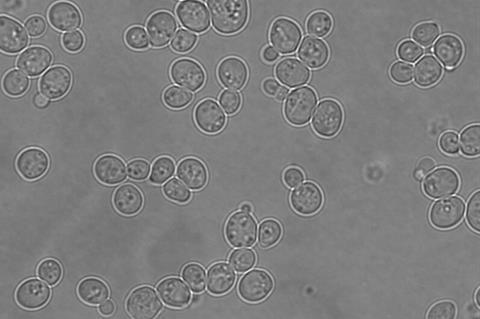Autophagy, the cell’s essential ‘housekeeping’ process, involves degrading and recycling damaged organelles, proteins, and other components to prevent clutter. This vital mechanism, found in all life forms from single-celled organisms to plants and animals, is key for maintaining cellular homeostasis. Its disruption is linked to many known diseases in humans, such as Alzheimer’s, Parkinson’s, and cancer.

Though understanding autophagy in detail is important from medical and biological perspectives, it is not a one-size-fits-all process. There are several forms of autophagy that differ in how the components to be degraded are transported to the lysosomes or vacuoles—the organelles that serve as the cell’s waste disposal and recycling centers. Autophagy targets a range of intracellular components including a part of the nucleus that stores important chromosomes. However, the physiological significance of autophagic degradation of the nucleus remains unknown.
Against this backdrop, a research team from Japan recently focused on an autophagy pathway that degrades a part of the nucleus (macronucleophagy) in Saccharomyces cerevisiae, a species of yeast widely used as a model organism in cellular research. In their latest paper, published in Nature Communications, the scientists sought to shed light on how macronucleophagy ensures the survival of nitrogen-starved S. cerevisiae and revealed that uncontrolled micronucleophagy due to the lack of normal macronucleophagy causes cell death. This work was led by PhD student Ziyang Li from Institute of Science Tokyo.
Autophagy pathway
To clarify, macronucleophagy is an autophagy pathway in which a part of the nucleus bulges outwards, is encapsulated by a vesicle called ‘autophagosome’, and is delivered to the vacuole. In contrast, in micronucleophagy, the nucleus’ outer surface directly contacts the vacuole at nuclear-vacuole junctions (NVJs). With the help of specific nuclear and vacuolar membrane proteins, a portion of the nucleus pushes into the vacuole (or ‘invaginates’), splits, and is finally degraded.
READ MORE: Scientists map role of Porphyromonas gingivalis in chemotherapy resistance
READ MORE: Wine yeast species may be communicating during fermentation - using extracellular vesicles
In a previous study, the research team found that mutant yeast cells with defective macronucleophagy (atg39Δ mutants) died rapidly when placed under nitrogen starvation. After careful comparisons of wild-type and atg39Δ cells, the researchers revealed that micronucleophagy was abnormally increased in the mutants, and this hyperactivation was a major contributor to cell death.
Through further analysis, the team linked this hyperactivation to a nuclear surface protein called Nvj1, which plays a key role in the tethering of the nucleus and the vacuole at the NVJs. It turns out that problems in macronucleophagy lead to the accumulation of Nvj1 on the nucleus, which in turn greatly enhances micronucleophagy.
Nuclear and cellular homeostasis
“Blocking micronucleophagy, almost completely suppressed cell death caused by the absence of macronucleophagy, whereas enhancing micronucleophagy exacerbated cell death under nitrogen starvation,” comments Li. “On the other hand, these results suggest that macronucleophagy modulates micronucleophagy in order to prevent the excess removal of nuclear components, thereby maintaining nuclear and cellular homeostasis.”
Taken together, the findings of this study shed light on how different forms of autophagy are closely related, even to the point where they dictate cell survival under stress. “We revealed that the modulation of micronucleophagy is a critical role for macronucleophagy, providing a physiological and mechanistic linkage between these distinct autophagy pathways,” concludes Li. Further studies on this complex topic will help us understand how cells take care of themselves, which could have important implications in medicine and biotechnology.







No comments yet